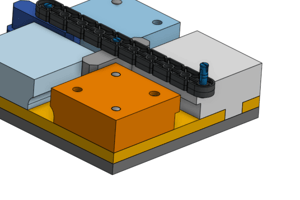Podcast
Questions and Answers
What is one of the specialties included in maternity nursing?
What is one of the specialties included in maternity nursing?
- Psychiatric care
- Geriatric care
- Emergency care
- Newborn care (correct)
What is the age range for pediatric nursing?
What is the age range for pediatric nursing?
birth to 18 years
Which definition of quality in nursing focuses on wise use of resources and lack of errors?
Which definition of quality in nursing focuses on wise use of resources and lack of errors?
- Patient
- Bedside nurse
- Nursing Manager (correct)
- Physician/midwife
The Institute of Medicine defines quality as the degree to which health services improve health outcomes.
The Institute of Medicine defines quality as the degree to which health services improve health outcomes.
Name one way nurses can improve quality in patient care.
Name one way nurses can improve quality in patient care.
What role assists with a patient's daily needs like nutrition, dressing, and movement?
What role assists with a patient's daily needs like nutrition, dressing, and movement?
What is required for a Licensed Practical/Vocational Nurse (LPN/LVN) to practice?
What is required for a Licensed Practical/Vocational Nurse (LPN/LVN) to practice?
Which role is primarily focused on providing patient-centered and family-centered care?
Which role is primarily focused on providing patient-centered and family-centered care?
Study Notes
Introduction to Maternity and Pediatric Nursing
- Maternity nursing encompasses a wide range of care, from puberty through menopause.
- Specialties within maternity nursing include: prenatal care, labor and delivery, postpartum care, newborn care, neonatal intensive care, women's health, and infertility care.
- Pediatric nursing focuses on children between birth and 18 years of age.
- Safety is paramount in pediatric nursing.
- Pediatric nursing addresses normal growth and development, acute, chronic, and critical care issues, and end-of-life and palliative care.
Quality in Maternal and Pediatric Nursing
- Quality of care is defined differently by various stakeholders, including nursing managers, bedside nurses, physicians, midwives, and patients.
- Nursing managers prioritize the wise use of resources, error-free care delivery, and positive patient feedback.
- Bedside nurses focus on safe and effective care.
- Physicians and midwives consider positive patient response to medications and interventions without complications.
- Patients measure quality by their improvement and recovery progress.
- The Institute of Medicine (IOM) defines quality healthcare as services that increase the likelihood of desired health outcomes and align with current professional knowledge.
Ways Nurses Improve Quality
- Nurses contribute to quality care by working within their scope of practice, utilizing evidence-based standards of care, and making sound decisions.
- They deliver family and patient-centered care, addressing individual needs, values, and expectations.
- Error and hazard identification and implementation of safety principles are crucial for quality care.
- Collaboration with health team members to reduce errors and enhance care is a priority.
- Cost-effective resource utilization, minimizing waste of materials and time, is also important.
- Providing equal, high-quality care to all patients, regardless of gender, ethnicity, culture, or socioeconomic status is essential.
Roles in Maternal-Child and Pediatric Nursing
- Maternity and pediatric nursing focuses on childbearing women, newborn infants, children, and families.
- The goal is to provide patient-centered and family-centered care.
- Roles in maternal-child and pediatric nursing include:
- Licensed practical/vocational nurses (LPN/LVN)
- Registered nurses (RN)
- Nurse practitioners (NP)
- Clinical nurse specialists (CNS)
- Certified nurse midwives (CNM)
- Certified Nursing Assistants (CNAs) assist with daily patient needs (nutrition, dressing, movement), take vital signs, collect specimens, and assist with transportation under the direct supervision of an RN, NP, PA, or physician.
- LPN/LVNs provide nursing care in various settings under the direction of an RN, NP, physician, or midwife. They may support patients in preparation for pregnancy and delivery.
- RNs are registered with a state board of nursing, completing a nursing program and passing the NCLEX-RN exam. They can work independently and provide a broad range of care.
Studying That Suits You
Use AI to generate personalized quizzes and flashcards to suit your learning preferences.
Related Documents
Description
Explore the essential concepts of maternity and pediatric nursing, covering care from puberty to menopause and focusing on children from birth to 18 years. This quiz will test your understanding of the various specialties, quality of care, and safety in these vital nursing fields.



